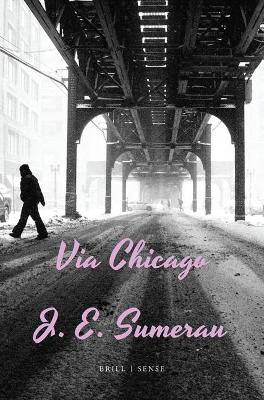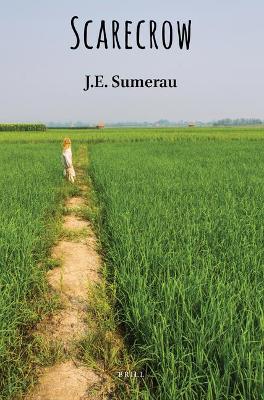Social Fictions
5 primary works
Book 24
Book 27
There may be no more famous form of seafood than an Apalachicola oyster. People travel from all over the world for the chance to try out these oysters and gush over just how large, flavorful, and unique they are in comparison to other foods. In Other People's Oysters, however, Apalachicola oysters are not merely internationally known delicacies bringing money and recognition to the bay - they are the center of family ties, a symbol of a disappearing way of life, and the catalyst for a social movement that rocks the nation.
Book 29
Finalist for 2019 Lambda Literary Award in Bisexual Fiction!
Finalist for 2019 Bisexual Book Awards in Young Adult Fiction!
Imagine engaging in sexual intimacy with someone you care about for the first time after surviving the loss of a serious, committed, loving relationship. In Palmetto Rose, this is where we find a bi+, gender fluid narrator affectionately called Kid by their loved ones. After five years trying to numb and escape the pain of losing their first love to a tragic accident, Kid begins to wake up, grieve, and try to rebuild their life in Atlanta, Georgia. Through their eyes, we watch as they seek to make sense of grief, pursue the possibility of a college education, and embark on their first serious romantic relationship since they were a teenager. In the process, we spend time with their chosen family of friends who navigate relationships, graduate programs, and developing careers. As the story unfolds, these friends face the ups and downs of early adulthood alongside the ways their individual and shared pasts find voices in their current endeavours, future plans, and intertwined lives. Although many characters in this story originally appeared in Cigarettes & Wine, Homecoming Queens, or Other People's Oysters, Palmetto Rose may be read as a stand-alone novel.
Palmetto Rose may be used as an educational tool for people seeking to better understand growing numbers of openly bisexual, transgender, and poly people; as a supplemental reading for courses across disciplines dealing with gender, sexualities, relationships, families, the life course, narratives, emotions, the American south, identities, culture, and / or intersectionality; or it can, of course, be read entirely for pleasure.
Finalist for 2019 Bisexual Book Awards in Young Adult Fiction!
Imagine engaging in sexual intimacy with someone you care about for the first time after surviving the loss of a serious, committed, loving relationship. In Palmetto Rose, this is where we find a bi+, gender fluid narrator affectionately called Kid by their loved ones. After five years trying to numb and escape the pain of losing their first love to a tragic accident, Kid begins to wake up, grieve, and try to rebuild their life in Atlanta, Georgia. Through their eyes, we watch as they seek to make sense of grief, pursue the possibility of a college education, and embark on their first serious romantic relationship since they were a teenager. In the process, we spend time with their chosen family of friends who navigate relationships, graduate programs, and developing careers. As the story unfolds, these friends face the ups and downs of early adulthood alongside the ways their individual and shared pasts find voices in their current endeavours, future plans, and intertwined lives. Although many characters in this story originally appeared in Cigarettes & Wine, Homecoming Queens, or Other People's Oysters, Palmetto Rose may be read as a stand-alone novel.
Palmetto Rose may be used as an educational tool for people seeking to better understand growing numbers of openly bisexual, transgender, and poly people; as a supplemental reading for courses across disciplines dealing with gender, sexualities, relationships, families, the life course, narratives, emotions, the American south, identities, culture, and / or intersectionality; or it can, of course, be read entirely for pleasure.
Book 33
What is a family? How do families of choice develop?
These questions permeate Via Chicago as ten people come together as a familial unit after each experiencing and (at least) beginning to recover from prior traumatic experiences. Ella and Linsk are a nonmonogamous couple who have helped one another heal and built an unconventional family together with Case, Kaisa, Reeves, Jo, Andrei, and Michelle over the course of a decade. As the novel begins, Mercury has just moved to Chicago to pursue graduate study when they begin a romantic relationship with Ella and a broader emotional engagement with the family. At the same time, Mercury is beginning to work through traumatic past experiences while Jo might have found love in the form of a new guy the family just calls Twitter Boy. As the novel progresses, we follow Mercury, Jo, and the rest of the family as each relates to their own and others' traumatic experiences and bonds together over these and other shared aspects of their lives, desires, and goals.
Via Chicago could be utilized in the teaching of sociology, families, romantic relationships, gender, sexualities, geography, urban studies, LGBTQIA studies, polyamory, trauma recovery, or narrative courses, or of course, it could be read entirely for pleasure.
These questions permeate Via Chicago as ten people come together as a familial unit after each experiencing and (at least) beginning to recover from prior traumatic experiences. Ella and Linsk are a nonmonogamous couple who have helped one another heal and built an unconventional family together with Case, Kaisa, Reeves, Jo, Andrei, and Michelle over the course of a decade. As the novel begins, Mercury has just moved to Chicago to pursue graduate study when they begin a romantic relationship with Ella and a broader emotional engagement with the family. At the same time, Mercury is beginning to work through traumatic past experiences while Jo might have found love in the form of a new guy the family just calls Twitter Boy. As the novel progresses, we follow Mercury, Jo, and the rest of the family as each relates to their own and others' traumatic experiences and bonds together over these and other shared aspects of their lives, desires, and goals.
Via Chicago could be utilized in the teaching of sociology, families, romantic relationships, gender, sexualities, geography, urban studies, LGBTQIA studies, polyamory, trauma recovery, or narrative courses, or of course, it could be read entirely for pleasure.
Book 45
Who am I? Where did I come from? What is a family? How do families of choice develop?
These questions permeate the pages of Scarecrow wherein a bisexual, nonbinary trans feminine person named Erin seeks to make sense of her life in relation to the places, people, and events she has seen and left behind over time. As the novel begins, Erin tells us that "39 funerals, 35 years, and too many lovers to bother remembering brought me to this point." From this opening statement, Erin reflects on three-and-a-half decades of experiences growing up working class, white, and queer in the southeastern U.S.; navigating sexual, gender, classed, racial, and religious meanings and relationships; surviving varied types of love, trauma, kindness, and violence; and joining the upper-middle class world of the professoriate. As the novel progresses, she shows us how these experiences intertwine, create opportunities, and leave scars that together fashion who she has become over time and in relation to others.
Scarecrow could be utilized in the teaching of sociology, social psychology, Symbolic Interactionism, narrative, families, gender, sexualities, race, class, geography, biography, Southern Studies, LGBTQIA studies, trauma recovery, courses about aging and the life course, or of course, it could be read entirely for pleasure.
These questions permeate the pages of Scarecrow wherein a bisexual, nonbinary trans feminine person named Erin seeks to make sense of her life in relation to the places, people, and events she has seen and left behind over time. As the novel begins, Erin tells us that "39 funerals, 35 years, and too many lovers to bother remembering brought me to this point." From this opening statement, Erin reflects on three-and-a-half decades of experiences growing up working class, white, and queer in the southeastern U.S.; navigating sexual, gender, classed, racial, and religious meanings and relationships; surviving varied types of love, trauma, kindness, and violence; and joining the upper-middle class world of the professoriate. As the novel progresses, she shows us how these experiences intertwine, create opportunities, and leave scars that together fashion who she has become over time and in relation to others.
Scarecrow could be utilized in the teaching of sociology, social psychology, Symbolic Interactionism, narrative, families, gender, sexualities, race, class, geography, biography, Southern Studies, LGBTQIA studies, trauma recovery, courses about aging and the life course, or of course, it could be read entirely for pleasure.




